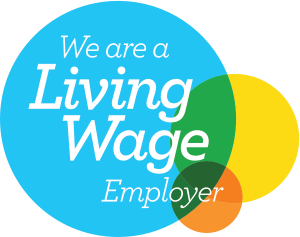By Abigail Lock, CEO, Back Up Trust
NCVO’s ‘Understanding Trustee Recruitment and Retention Challenges Survey’ landed just as Back Up was about to recruit four new trustees. Reading that four out of five respondents had board vacancies didn’t exactly fill me with hope.
A supportive and engaged board of trustees makes a huge difference. Key to that is recruiting people with the right skills and mindset. After completing a skills audit, we identified the gaps we needed to fill. As a spinal cord injury charity, lived experience is central to our approach. Back Up is committed to having at least 50% of trustees directly affected by spinal cord injury. We also wanted trustees with diverse backgrounds and perspectives. To achieve this, we had to actively reach out to people who might not have considered becoming a trustee.
Another key priority was demystifying what it means to be a trustee. Engaging our 60-strong staff team was an effective way to raise awareness of our board’s role and encourage them to spread the word. I challenged the team to reach out to individuals they believed could bring valuable and fresh perspectives. One of our newer trustees, Grace, who was serving in her first-ever trustee role, shared her experience a year in. We also encouraged people who were ‘trustee-curious’ to reach out for a conversation. These informal discussions proved invaluable—not only in identifying great potential trustees who hadn’t previously seen themselves in that role but also in filtering out those who hadn’t fully grasped the time commitment and responsibilities involved.
By the closing date, our shortlisting panel was overwhelmed by the number, quality, and diversity of applicants. But this created a new challenge: we simply didn’t have enough vacancies to appoint all the fantastic candidates. We knew we wanted to keep them engaged. One by one, I picked up the phone to discuss other ways they could support us. At the same time, I saw an opportunity to develop a future trustee pipeline. Recruitment is time-intensive, especially in charities of our size without dedicated HR support. To ease the process in the future, I worked with our Remuneration and Nomination Committee, responsible for trustee succession planning, to develop a structured programme. Our aims were to:
- Equip participants with the knowledge and confidence to serve as trustees at Back Up or other charities
- Increase board diversity
- Create pathways for underrepresented voices to be heard at board level
The programme was offered to three candidates—all with spinal cord injuries and no prior trustee experience. It includes:
- Time-limited observer status: participants attend board meetings virtually as non-voting observers for 12 months. They also have the opportunity to observe a board meeting of another charity.
- Trustee buddy system: each participant is paired with a former Back Up trustee, serving as a mentor throughout the programme. This also provides a meaningful way to engage our former trustees and leverage their expertise.
- Access to trustee training: participants receive e-learning sessions covering key governance areas, including:
- Legal and financial responsibilities of trustees.
- Strategic planning and risk management.
- Governance project: participants collaborate on one of two projects
- Developing a formal framework to integrate young people’s perspectives into board decisions, strengthening the link between our board and our Youth Advisory Group.
- Enhancing representation of people affected by spinal cord injury from Black and minority ethnic communities and those with higher-level injuries within Back Up’s governance.
- The projects culminate in a board presentation with recommendations for implementation.
We’re at the beginning of this journey, and ultimately, success will be measured in outcomes. But I already know that investing time now in developing future trustees will make our next recruitment round far more effective and rewarding. For CEOs and charity leaders, taking the time to rethink trustee recruitment isn’t just about filling vacancies—it’s about shaping stronger, more inclusive, and future-ready boards.



